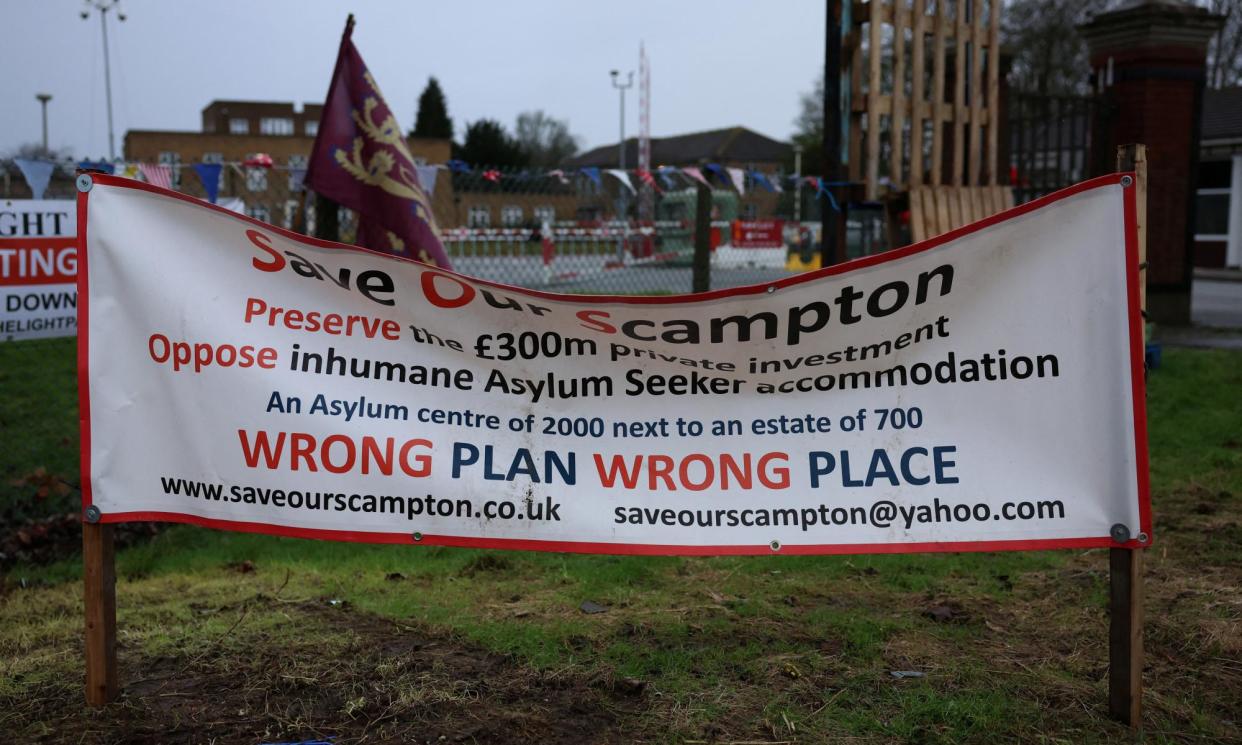Former RAF base to house asylum seekers is contaminated, government letters say

A UK military base due to accommodate up to 2,000 asylum seekers under controversial plans has been found to be contaminated with ground gases and unexploded ordnance, according to government documents.
RAF Scampton in Lincolnshire is one of three mass accommodation sites earmarked by the Home Office to house asylum seekers as a supposedly cheaper alternative to hotels.
Ministers had initially planned to have 3,000 asylum seekers accommodated on three sites – the Bibby Stockholm barge in Portland, Dorset, the Wethersfield former military base in Essex and RAF Scampton in Lincolnshire – by the end of 2023. But there are fewer than 1,000 people on the Bibby Stockholm and at Wethersfield and none at Scampton, though the first 60 asylum seekers are due to arrive there in the coming weeks.
A letter from Lee Rowley, the minister for housing, planning and building safety, addressed to West Lindsey district council, where RAF Scampton is situated, stated that there are “potential risks to human health arising from ground gases, UXO (unexploded ordnance) and ground contamination which could affect both workers on the site and asylum seekers”.
“These risks could mean the site is not suitable for its intended use which could give rise to likely significant effects associated with human health,” the letter states.
The letter also says that mitigation measures are in place to make the site safe but “in the unlikely event of failure of any of the mitigation measures users will be removed from the affected location within the site”.
A separate letter from Home Office officials, also sent to the council earlier this month, notes that being housed on a military base could trigger trauma for some asylum seekers.
“Those accommodated at the site are likely to be aware that it was formerly used as a military barracks. For some asylum seekers this association may trigger memories of past mental traumas in their home countries which is why the site is unlikely to be deemed suitable for those who are vulnerable or have serious mental health needs,” it states.
West Lindsey district council is opposed to the Home Office plans for RAF Scampton and has expressed concerns about it jeopardising a future heritage scheme for the historic site. The base was home of the Dambusters and has five Grade II-listed buildings.
It describes the Home Office plan to significantly increase the population in the remote, rural area as “unsustainable and inappropriate” and refers to high levels of contamination on the site.
The council has also raised concerns about possible damage to material of archaeological significance during the construction process. “This is considered irreversible harm which would result in substantial harm to heritage assets with archaeological interest,” officials states in a response to government about the plans.
Related: ‘Like a stalag’: local people condemn asylum seeker housing on Essex airbase
According to the Home Office, at the end of December 2023 there were about 46,000 asylum seekers in hotels costing £8m each day. A recent report from the National Audit Office found that housing people at RAF Scampton will cost £45.1m more than hotels.
A government spokesperson said: “The asylum system is under unprecedented pressure, brought about by a significant increase in dangerous and illegal journeys into the country. As part of the conditions of the special development order for RAF Scampton, a number of surveys will be undertaken prior to occupation.
“The safety of individuals remains our absolute priority, and we reiterate that any accommodation used in response to the increasing pressures on the UK asylum system will be fit for purpose and meet all relevant housing and health and safety rules.”


